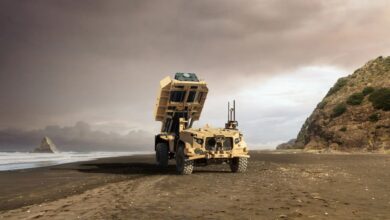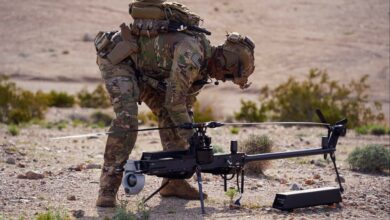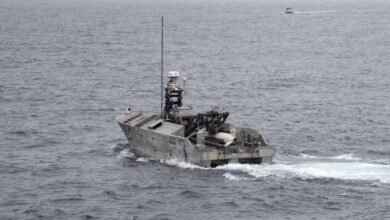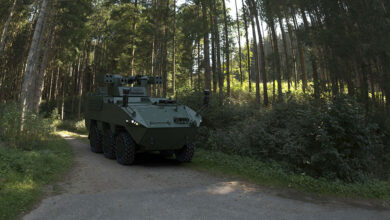Researchers at the Naval Surface Warfare Center, Port Hueneme Division have successfully launched and landed a drone from a moving ship, taking a recent idea to use Unmanned Aerial Vehicles (UAV) to test and evaluate seaborne laser weapons another step to completion.
Research Technology Applications Manager Alan Jaeger and Cybersecurity Researcher Ian Wilson conducted their first test a few miles off the coast of Port Hueneme in California, practicing the take-off, hovering and flying alongside, and landing of a quadcopter from a moving and stationary ship.
The quadcopter operates on “autonomous navigation” software specifically designed for UAVs to correctly maneuver independently of ships or other moving vehicles which must cope with bobbing, rolling, tight spaces, and high winds.
Successful Test and Moving Forward
If tests continue successfully, the drone will one day employ special electronics to measure key performance indicators of the navy’s latest Laser Weapon System Demonstrator on USS Portland (LPD 27). The electronics will collect data while the ship employs the UAV as an instrumented target.
However, before this can be fully implemented, Jaeger and Wilson are testing the vehicle, how well it flies, hovers, keeps pace with moving ship, and lands autonomously at the weight it will be with all electronics fully installed.
“We’re here to find some bugs so we can determine if the drone and the software are ready,” Jaeger said.
The test was conducted at the annual Coastal Trident Port and adjunct Maritime Security Program/Advanced Naval Technology Exercise this past September.
Conducting the test required two days of preparation, as the 55 lb. (25 kg), 50-inch (127 cm) drone was larger and heavier than the testers had previously flown.
Amid adverse conditions such as wind gusts and seaborne ship movement, the drone performed the test successfully according to a preprogrammed route without the intervention of the administrators, despite needing “some refining” such as waterproofing.
“The UAV kept pace with the ship because it has a GPS and uses the tag (QR codes),” Jaeger said. “It sees the large code, and drops down a little, then the middle-sized code and then the smaller one as it lowers closer (to the ship). It also kept relative distance to the tag and matched the ship as the ship rose and fell (in the waves).”
The Port Hueneme test will be followed by “a test plan and objectives for an actual test with the Portland on the Point Mugu test range” which will require certification by the Federal Aviation Administration to operate drones in national airspace, general safety, security, and cyber waivers.












